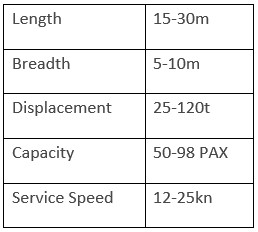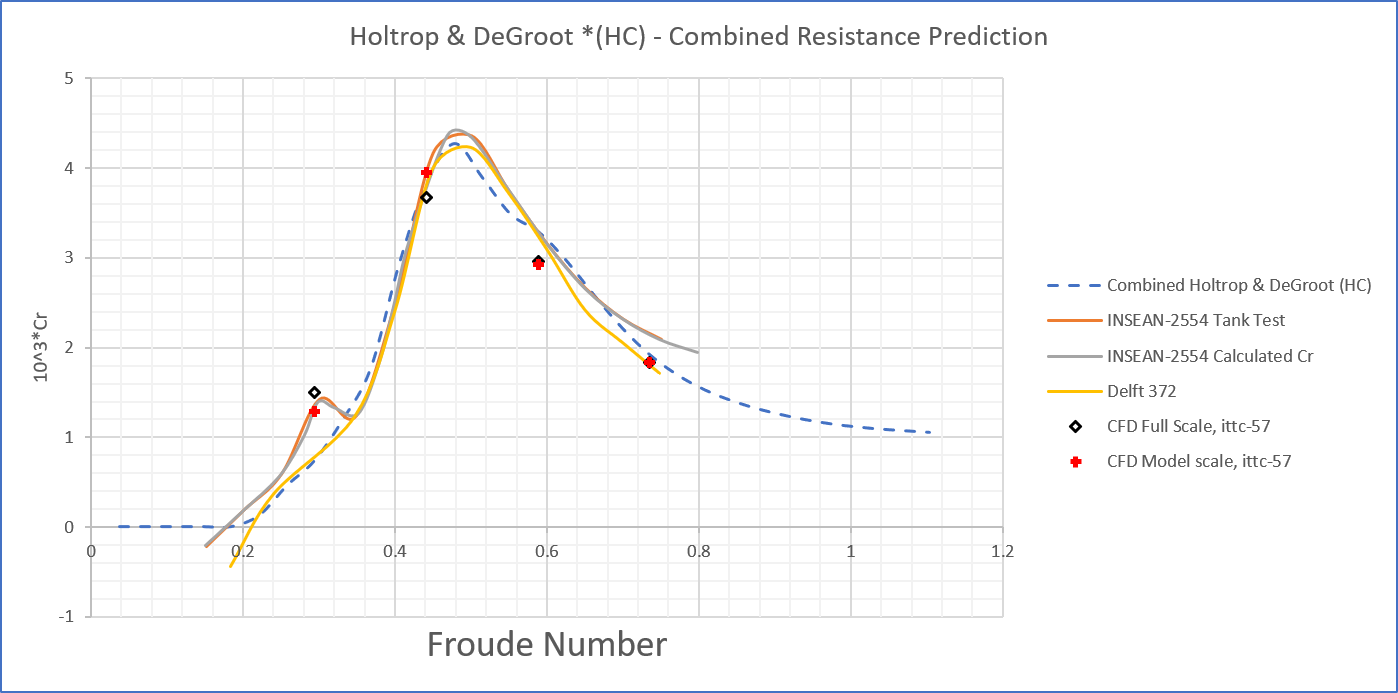The Contributor
The National Research Council Canada (NRC) as represented by its Industrial Research Assistance Program (IRAP) funded the research in 2020 and 2021.
The Brief
The objective of the research project was to develop an adaptable catamaran ship design valid within a certain design space given by the main dimensions (length, draught, beam, displacement, number of passengers and operational range). The aim is to be able to design variants efficiently, quickly and with high accuracy and thereby limit the technical risk for both the client and Capilano Maritime Design Ltd.
The design platform is intended for various applications such as commuter passenger ferry, harbour cruise, offshore supply, research vessel etc.
The Design
The catamaran designs in the range of the following main dimensions were explored:

The initial focus was on small passenger vessels with lengths ranging from approximately 20 to 40 metres. Specific areas of interest were catamarans with low l/b ratio, low Froude number (low speed to length ratio) and/or high displacement to length ratio.
The main technical risks identified are: resistance, wave making, propulsion and weight.
In order to evaluate a large number of hull form variations a CFD set-up was validated using published hull forms and model tests results of the catamaran Delft 372 as well as a comparison was made to empirical formulas for resistance calculation of catamarans.
The CFD calculation results, empirical formulas and the published model test results for the Delft 372 agreed well for both resistance, dynamic trim and sinkage, as shown in below figure.

This validated set-up was subsequently applied using different hull shapes to determine their hydrodynamic performance.
The hull forms that were part of the design study had a considerable higher displacement than the validation case (Delft 372), in the order of 60%, and therefore also distinctively different hull characteristics. Thanks to the extensive CFD studies we determined the limitations and accuracy of these empirical formulas at or beyond their application range.
In parallel, a structural layout based on DNV-GL’s rules for high speed and light craft (HSLC) rules was prepared and utilized for a FEA analysis to investigate vulnerable spots, accurately determine design margins and optimize material allocation hence minimizing structural weight.
During the course of the research project several design tools were developed that enable CMDL to develop catamaran concept designs in a shorter time frame while increasing the level of detail and confidence, thus reducing the technical risks and consequently reducing design margins earlier.
References
- Remmlinger, “The resistance of the Delft 372 Hull”, 2014
- Van’t Veer R. “Experimental results of motions and structural loads on the 372 catamaran model in head and oblique waves.” TU Delft Report, N.1130, 1998
- Van’t Veer R. “Experimental results of motions, hydrodynamic coefficients and wave loads on the 372 catamaran model” TUDelft, 1998
- Broglia R, Zaghi S. “Calm water tests for the DELF 372, Catamaran model at several hull separations”, INSEAN, Report, 2010
- Broglia, B. Bouscasse, B. Jacob, A. Olivieri, S. Zaghi and F. Stern, “Calm Water and Seakeeping Investigation for a Fast Catamaran” 11th International Conference on Fast Sea Transportation, FAST 2011, Honolulu, Hawaii, USA, September 2011
- DNVGL-RU-High Speed and Light Crafts- Part 3
- DNVGL-CG-0127- Finite Element Analysis
- Liang Yun, Alan Bliault, Huan Zong Rong, “High Speed Catamarans and Multihulls”, Book
- Liao PK, Quemener Y, Syu YC, Chen KC, & Lee YJ, Validation of Practical Approaches for the Strength Evaluation of High-speed Catamaran under Beam and Quartering Seas, The 31st Asian-Pacific Technical Exchange and Advisory Meeting on Marine Structure, 2017